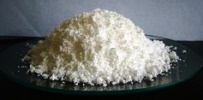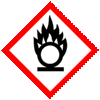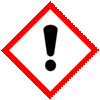Search for the supplies that you need here:
DMF Support and Documentations Available | |
 WHO-GMP Certified Good Manufacturing Practice Certified by World Health Organization |  WC, Written Confirmation for Active Substance to be imported into European Union (EU). |
Hydrous Benzoyl Peroxide SDS of Manufacturers
Anmol Chemicals is a manufacturer supplier exporter of Hydrous Benzoyl Peroxide and it offers materials as per IP BP EP Ph Eur USP NF JP FCC Food Grade as per the the latest monograph at best prices. Anmol Chemicals Group, established in 1976, is the pioneer manufacturer of Specialty Chemicals, Pharmaceutical Excipients, Some API, Food Chemicals in India. Anmol Chemicals Group has manufacturing facilities spread across Western India, representatives in Houston, Chicago USA and Dubai, UAE. We also have toll manufacturing units for processing chemicals in a few countries around the world. We make IP, BP, EP, USP, NF, Ph. Eur., JP, FCC or Food Grade, Analytical Reagent Grade, LR or Laboratory Reagent Grades and Pure Grades of various chemicals. All our items are analyzed to meet the required standards. We can supply the product in grams for your laboratory trial and in tons for your plant scale jobs.
We manufacture Bulk Drugs / API, Excipients, Pharmaceuticals (IP BP USP NF Ph Eur EP JP), Specialty Chemicals (Pure/Reagent), Mineral Fortifiers (FCC). Our manufacturing facility is FDA approved and GLP, cGMP, ISO9001, ISO14001, ISO/IEC 17025, ISO22000, FSSC 22000, ISO45001, FSSAI, Kosher, HALAL, COPP, WHO-GMP certified and Written Confirmation (WC) is available. Solid materials can be customized for particle size, shape, and bulk density. We observe WHO Good Manufacturing Practices and Good Laboratory Practices. We are a government-recognized STAR Export House and "Authorised Economic Operator (AEO)" per Indian Customs.
All technical documents and DMF support available.
Hydrous Benzoyl Peroxide Specifications of Manufacturers

Benzoyl Peroxide SDS, Safety Data Sheet
MSDS Sheet, Material Safety Data Sheet
1. Product & Company Identification
Product Name & Other Names: Benzoyl Peroxide or Dibenzoyl peroxide. Hydrous Benzoyl Peroxide.
CAS No.: 94-36-0
EINECS EC Number: 202-327-6
Molecular Weight: 242.23
Chemical Formula: (C6H5CO)2O2
Relevant uses and uses advised against (if any): Industrial Use.
Supplier: As per letterhead.
2. Hazards Identification
GHS, Globally Harmonized System Classification in accordance with 29 CFR 1910
Classification according to Regulation (EC) No 1272/2008
Organic peroxides (Type C), H242
Skin sensitization (Category 1), H317
Eye irritation (Category 2), H319
Hazardous to aquatic environment (Category 3), H402
Labeling according GHS & Regulation (EC) No 1272/2008
GHS Label Elements  Oxidizing Solid |
GHS Label Elements  Irritant |
Signal Word: Danger
Hazard Statements:
H242 - Heating may cause a fire.
H317 - May cause an allergic skin reaction
H319 - Causes serious eye irritation
H402 - Harmful to aquatic life.
Precautionary Statements - Prevention
P210: Keep away from heat/sparks/open flames/hot surfaces. - No smoking.
P220: Keep/Store away from clothing/combustible materials
P221: Take any precaution to avoid mixing with combustibles
P261: Avoid breathing dust.
P234: Keep only in original container.
P264: Wash face, hands and any exposed skin thoroughly after handling
P270: Do not eat, drink or smoke when using this product
P271: Use only outdoors or in a well-ventilated area
P273: Avoid release to the environment.
P280: Wear protective gloves/ protective clothing/ eye protection/ face protection.
Precautionary Statements - Response
P301+P312: IF SWALLOWED: Call a POISON CENTER or doctor if you feel unwell.
P302+P352: IF ON SKIN: Wash with plenty of water.
P304+P341: IF INHALED: If breathing is difficult, remove to fresh air and keep at rest in a position comfortable for breathing.
P305+P351+ P338: IF IN EYES: Rinse cautiously with water for several minutes. Remove contact lenses, if present and easy to do. Continue rinsing.
P314: Get Medical advice/attention if you feel unwell.
P330: If swallowed, rinse mouth.
P333+P313: If skin irritation or rash occurs: Get medical advice/ attention.
P337+P313: If eye irritation persists: Get medical advice/ attention
P342+P311: If experiencing respiratory symptoms: Call a POISON CENTER or doctor.
P362: Take off contaminated clothing and wash before reuse.
P370+P378: In case of fire: Use water for extinction.
Precautionary Statements - Storage
P402: Store in a dry place.
P403+P233: Store in a well-ventilated place. Keep container tightly closed
P501: Dispose of contents/container in accordance with local, regional, national, international regulations.
Supplemental Hazard information (EU)
EUH001 Explosive when dry.
Classification according to EU Directives 67/548/EEC or 1999/45/EC
Hazard Symbols:
Xi = Irritant
O = Oxidizer
Risk Phrases:
R8 Contact with combustible material may cause fire.
R36/38 Irritating to eyes and skin.
R52 Harmful to aquatic organisms.
3. Composition/Information on Ingredients
Product Name & Other Names: Benzoyl Peroxide or Dibenzoyl peroxide. Hydrous Benzoyl Peroxide.
CAS No.: 94-36-0
EINECS EC Number: 202-327-6
4. First Aid Measures
Always seek medical attention after first aid measures are provided.
Inhalation: Remove to fresh air. If not breathing, give artificial respiration. If breathing is difficult, give oxygen. Get medical attention.
Ingestion: If swallowed, do not induce vomiting. Give large quantities of water. Never give anything by mouth to an unconscious person. Get medical attention immediately.
Skin Contact: In case of contact, immediately flush skin with plenty of water for at least 15 minutes while removing contaminated clothing and shoes. Cover the irritated skin with an emollient. Cold water may be used. Wash clothing & shoes before reuse. Get medical attention.
Eye Contact: Check for and remove any contact lenses. In case of contact, immediately flush eyes with plenty of water for at least 15 minutes. Cold water may be used. Get medical attention.
5. Fire Fighting Measures
Fire: Not combustible, but substance is a strong oxidizer and its heat of reaction with reducing agents or combustibles may cause ignition. Heating or contact with water releases oxygen which may intensify combustion in an existing fire. It is explosive when dry.
Explosion: An explosion hazard when mixed with finely powdered organic matter, metal powder, or reducing agents.
Special hazards arising from the substance or mixture: Carbon oxides and fumes.
Fire Extinguishing Media: Use water spray, alcohol-resistant foam, dry chemical or carbon dioxide. Use means suitable for extinguishing surrounding fire. Cool containers with flooding quantities of water until well after fire is out.
Special Information: In the event of a fire, wear full protective clothing and NIOSH-approved self-contained breathing apparatus with full face piece operated in the pressure demand or other positive pressure mode. Sealed containers may rupture when heated.
6. Accidental Release Measures
Personal precautions, protective equipment and emergency procedures: Avoid breathing dust/fumes/gas/mist/vapors/spray. Use individual protective equipment (waterproof boots, suitable protective clothing, safety glasses, etc.). Restrict unprotected personnel from the area. Prevent any contact with hot surfaces. Do not approach facing the wind. Do not touch the spilled material.
Environmental precautions: Do not let the product enter drains, soil or water sources.
Methods and materials used for containment Cleanup procedures and Storage:
Small Spill: Use appropriate tools to put the spilled solid in a convenient waste disposal container.
Large Spill: It is an oxidizing material. Stop leak if without risk. Avoid contact with a combustible material (wood, paper, oil, clothing etc.). Keep the substance damp using water spray. Do not touch spilled material. Prevent entry into sewers. Eliminate all ignition sources. Avoid penetration into waterways, sewers, soil or groundwater. Local authorities should be advised if significant spillages cannot be contained.
7. Handling and Storage
Precautions for safe handling: Apply according to good manufacturing and industrial hygiene practices. Ensure proper ventilation. Wash thoroughly after handling. Do not drink, eat or smoke while handling. Avoid contact with skin, eyes and clothing. Minimize dust generation. Avoid breathing dust/fumes/gas/mist/vapors/spray. Avoid contact with eyes, skin, and clothing. Keep container tightly closed. Avoid ingestion and inhalation. Use individual protective equipment (waterproof boots, suitable protective clothing, safety glasses, etc.). Prevent any contact with hot surfaces.
Conditions for safe storage, including any incompatibilities: Store in cool, dry and ventilated area away from heat sources and protected from sunlight in tightly closed original container. Keep air contact to a minimum. Do not leave the material container open. Store protected from heat, sparks and ignition sources and incompatible materials. Avoid contact with skin and eyes. Avoid inhalation of dust/mist/vapor. Do not store with incompatible materials like reducing agents, organic material, water, and powdered metals especially aluminum, acids, bases, halides, oxidizing agents, combustible materials. Avoid breathing dust. Handle product only in closed system or provide appropriate exhaust ventilation at machinery. Organic peroxides and self-reacting hazardous materials. Recommended storage temperature 2C - 8C.
8. Exposure Controls/Personal Protection
Airborne Exposure Limits: Contains no substances with occupational exposure limit values.
Ventilation System: A system of local and/or general exhaust is recommended to keep employee exposures below the Airborne Exposure Limits. Local exhaust ventilation is generally preferred because it can control the emissions of the contaminant at its source, preventing dispersion of it into the general work area.
Personal Respirators (NIOSH Approved): For conditions of use where exposure to dust or mist is apparent and engineering controls are not feasible, a particulate respirator (NIOSH type N95 or better filters) may be worn. If oil particles (e.g. lubricants, cutting fluids, glycerin, etc.) are present, use a NIOSH type R or P filter. For emergencies or instances where the exposure levels are not known, use a full-face positive-pressure, air-supplied respirator. WARNING: Air-purifying respirators do not protect workers in oxygen-deficient atmospheres.
Skin Protection: Wear protective gloves and clean body-covering clothing.
Eye Protection: Use chemical safety goggles. Maintain eye wash fountain and quick-drench facilities in work area.
9. Physical and Chemical Properties
Appearance: Solid
Odor: Bitter almond-like
Odor threshold: Not available.
pH: Not available.
Relative density: 0.53
Melting Point: 103C - 104C
Initial boiling point and boiling range: Not available.
Flash point: Not available.
Auto-ignition temperature: 80C
Decomposition temperature: >70C.
Upper/lower flammability or explosive limits: Not available.
Vapor pressure: Not available.
Vapor density: Not available.
Evaporation rate: Not available.
Flammability (solid, gas): Not available.
Partition coefficient: n-octanol/water: Not available.
Solubility: Practically insoluble in water
Viscosity: Not available.
10. Stability and Reactivity
Stability: Stable under recommended conditions of use and storage.
Hazardous Decomposition Products: Burning may produce Carbon oxide. Oxygen is released which supports combustion.
Hazardous Polymerization: Will not occur
Incompatibilities: Reducing agents, organic material, water and powdered metals especially aluminum. Acids, Bases, Halides, Oxidizing agents, Strong reducing agents, Combustible materials.
Conditions to Avoid: Combustible materials and incompatibles. Heat, flames and sparks.
11. Toxicological Information
Oral rat LD50: 7710 mg/kg
LC50 rat: > 24.3 mg/l; 4 h
Carcinogenicity: IARC: 3 - Group 3: Not classifiable as to its carcinogenicity to humans (Benzoyl peroxide).
Mutagenic Effects: Not available.
Developmental Toxicity: Not available.
Reproductive Effects: No information available.
To the best of our knowledge, the chemical, physical, and toxicological properties have not been thoroughly investigated.
12. Ecological Information
Toxicity to fish LC50: No data available
Mobility: No information available.
Persistence and degradability: This substance/mixture contains no components considered to be either persistent, bioaccumulative and toxic (PBT), or very persistent and very bioaccumulative (vPvB) at levels of 0.1% or higher.
13. Disposal Considerations
Whatever cannot be saved for recovery or recycling should be handled as hazardous waste and sent to a RCRA approved waste facility. Processing use or contamination of this product may change the waste management options. State and local disposal regulations may differ from federal disposal regulations. Dispose of container and unused contents in accordance with federal, state and local requirements.
14. Transport Information
Domestic (Land DOT USA) and ADR/RID
Proper Shipping Name: ORGANIC PEROXIDE TYPE C, SOLID (DIBENZOYL PEROXIDE)
Hazard Class: 5.2; UN/NA: UN3104
International (Water, I.M.O.) IMDG & IATA
Proper Shipping Name: ORGANIC PEROXIDE TYPE C, SOLID (DIBENZOYL PEROXIDE)
Hazard Class: 5.2; UN/NA: UN3104
15. Regulatory Information
USA: No further data available.
Section 16 - Additional Information
European Labeling in Accordance with EC Directives:
H242 - Heating may cause a fire.
H317 - May cause an allergic skin reaction
H319 - Causes serious eye irritation
H402 - Harmful to aquatic life.
Hazard Symbols:
Xi = Irritant
O = Oxidizer
Risk Phrases:
R8 Contact with combustible material may cause fire.
R36/38 Irritating to eyes and skin.
R52 Harmful to aquatic organisms.
Disclaimer:
**************************
Our company provides this MSDS sheet in good faith but makes no representation as to its comprehensiveness or accuracy. This SDS sheet is intended only as a guide to the appropriate precautionary handling of the material by a properly trained person using this product. The above information has been compiled from various sources and has the possibility of discrepancy and being out-dated information. Individuals receiving the information must exercise their independent judgment and do further search in determining its appropriateness for a particular purpose. In no case shall our company be liable to loss or damages by the product user.
**************************



Manufacturer Supplier Exporter
ANMOL CHEMICALS Private Limited
Representatives in Houston, Chicago and New York, USA
TEL: (OFF) +91 22 23726950, +91 22 23774610, +91 22 23723564
Taloja Navi Mumbai, Banglore, INDIA
e-mail: info@anmol.org
Copyright and Usual Disclaimer is Applicable
Last updated 15-oct-25
Exporters to USA, Canada, UAE, Kuwait, Qatar, Gautemala, Tunisia, Europe, South Africa, Bangladesh, Sri Lanka, Tanzania, Kenya, Egypt, Iraq, Turkey, Israel, Vietnam, Nigeria, Uganda, Brazil, Chile, Argentina, Dubai, UAE, Saudi Arabia, Cameroon, Mexico, Brazil, Chile, Argentina, Korea, Thailand, Malaysia, Indonesia, Jakarta, Australia, China, Germany, France, etc.
Representatives in New York, Houston - Texas, Chicago - Illinois, Los Angeles.
All products are Sold for Industrial and Laboratory Use only.
Fast Selling IP BP Ph Eur EP USP NF JP Analytical Reagent FCC Food Grades of Chemicals by Anmol Chemicals
Ammonium Persulfate --- Acetic Acid Glacial --- Aluminum Chloride --- Ammonium bicarbonate --- Benzyl Alcohol --- Butylated Hydroxyanisole --- Butylated Hydroxytoluene --- Boric Acid --- Calcium Butyrate --- Calcium Chloride --- Calcium Hydroxide --- Calcium Lactobionate --- Calcium Saccharate --- Carbamide Peroxide --- Calcium Oxide --- Calcium Sulfate --- Chromic Chloride --- Fumaric Acid --- Magnesium Butyrate --- Magnesium Chloride --- Magnesium Sulfate --- Malic Acid --- Maleic Acid --- Manganese Chloride --- Manganese Sulfate --- Octyldodecanol --- Oleic acid --- Phenylethyl Alcohol --- Propylene Carbonate --- Potassium Hydroxide Pellets --- Potassium Alum --- Selenious Acid --- Sodium Acetate --- Sodium Bromate --- Sodium Selenite --- Sodium Perborate --- Sodium Hydroxide --- Sodium Sulphate --- Sodium Sulfide --- Sodium Thiosulfate --- Urea --- Zinc Chloride --- Zinc Sulphate ---


















